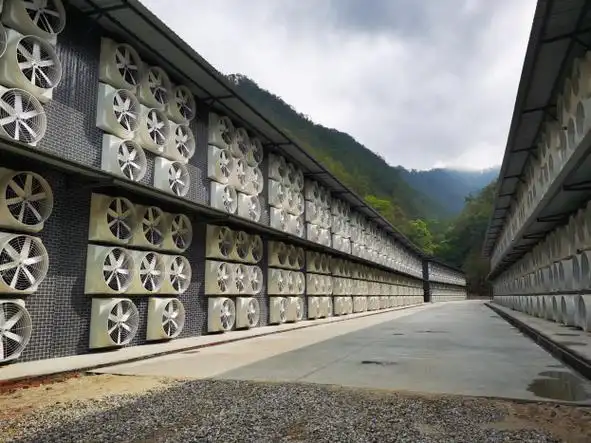The world of cryptocurrency mining is on the brink of a revolutionary leap, heralded by the introduction of energy-efficient mining hardware in 2025. As digital currencies like Bitcoin (BTC), Ethereum (ETH), and Dogecoin (DOG) continue to gain traction and reshape the global financial landscape, the significance of sustainable mining practices has never been more apparent. With concerns surrounding energy consumption and environmental impact at the forefront, the evolution from traditional mining rigs to greener alternatives promises to redefine the industry.

At the core of this transformation lies the mining farm, a sophisticated setup designed to optimize performance while minimizing energy expenditure. Traditional mining farms often rely on bulky, high-energy-consuming machines that not only drain electricity but also generate excessive heat – a dual concern for both operational costs and environmental sustainability. However, the rise of innovative technologies is paving the way for a new era: one where green energy sources and high-efficiency mining machines coexist to promote sustainable practices.
One of the key players in this arena is the next generation of mining rigs, which leverages state-of-the-art hardware and software solutions. These advanced mining rigs are engineered to function at higher hash rates with significantly lower power consumption. Projects focusing on these tools are integrating renewable energy sources, such as solar and wind power, into their operations. This strategic shift not only reduces the carbon footprint but also enhances long-term profitability by slashing energy costs.

The importance of adaptive energy strategies cannot be overstated, particularly in the context of Bitcoin mining, where competition for reward blocks is fiercer than ever. Miners equipped with energy-efficient systems can maintain an edge in profitability while operating sustainably. To illustrate, operators employing hosting solutions increasingly favor facilities utilizing sustainable energy. By hosting their rigs in optimized environments, miners can enjoy the benefits of advanced cooling systems and professionally managed energy resources, ensuring minimal energy waste.
Moreover, as the cryptocurrency market continues to expand, so too does the diversity of altcoins like Ethereum and Dogecoin. Many enthusiasts are transitioning from conventional mining methods to staking and cloud mining, which present lower energy requirements while still yielding fantastic returns. In this context, hosting services become indispensable, allowing users to invest in cryptocurrencies without the burdens of physical hardware management. Such platforms often showcase cutting-edge mining machines that are not only effective but also designed with eco-friendliness in mind.
The shift toward energy-efficient mining solutions aligns seamlessly with the broader conversation about the long-term viability of cryptocurrencies themselves. Stakeholders ranging from miners to investors must consider the environmental impacts of their activities. High energy consumption has led to serious scrutiny from policymakers, and adopting sustainable practices serves to bolster legitimacy in the eyes of regulators and the public alike. This focus on sustainability, coupled with the ever-advancing landscape of mining hardware, is set to enhance the resilience of the crypto industry as a whole.

In conclusion, the rise of energy-efficient mining hardware and sustainable practices in the realm of cryptocurrency is not merely a trend—it represents a fundamental shift toward responsible innovation. As Bitcoin, Ethereum, and other currencies continue to evolve within a rapidly changing economic environment, embracing greener technologies will be essential for all participants in the mining ecosystem. The challenge lies in not only keeping pace with industry advancements but also underlining the commitment to a greener future amid the race for block rewards. The efforts being made today are layered, multifaceted, and reflect the true spirit of progress in the digital era.



Leave a Reply